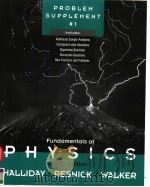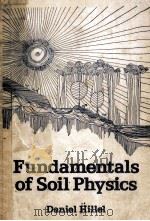《Fundamentals of Physics》
| 作者 | 编者 |
|---|---|
| 出版 | 未查询到或未知 |
| 参考页数 | 1194 |
| 出版时间 | 没有确切时间的资料 目录预览 |
| ISBN号 | 9971513307 — 求助条款 |
| PDF编号 | 811369108(仅供预览,未存储实际文件) |
| 求助格式 | 扫描PDF(若分多册发行,每次仅能受理1册) |

PART 11
CHAPTER 1Measurement1
1-1Measuring Things2
1-2 The International System of Units2
1-3 Changing Units3
1-4 Length4
1-5 Time6
1-6 Mass7
Review & Summary8
Exercises & Problems8
CHAPTER 2Motion Along a Straight Line11
2-1Motion12
2-2 Position and Displacement12
2-3 Average Velocity and Average Speed13
2-4 Instantaneous Velocity and Speed15
2-5 Acceleration17
2-6 Constant Acceleration:A Special Case19
2-7 Another Look at Constant Acceleration22
2-8 Free-Fall Acceleration23
Review & Summary25
Questions26
Exercises & Problems27
CHAPTER 3Vectors31
3-1Vectors and Scalars32
3-2 Adding Vectors Geometrically32
3-3 Components of Vectors34
3-4 Unit Vectors37
3-5 Adding Vectors by Components38
3-6 Vectors and the Laws of Physics40
3-7 Multiplying Vectors40
Review & Summary44
Questions45
Exercises & Problems45
CHAPTER 4Motion in Two and Three Dimensions48
4-1Moving in Two or Three Dimensions49
4-2 Position and Displacement49
4-3 Average Velocity and Instantaneous Velocity51
4-4 Average Acceleration and Instantaneous Acceleration53
4-5 Projectile Motion54
4-6 Projectile Motion Analyzed56
4-7 Uniform Circular Motion60
4-8 Relative Motion in One Dimension62
4-9 Relative Motion in Two Dimensions63
Review & Summary65
Questions66
Exercises & Problems67
CHAPTER 5Force and Motion—Ⅰ72
5-1 What Causes an Acceleration?73
5-2 Newton’s First Law73
5-3 Force74
5-4 Mass75
5-5 Newton’s Second Law76
5-6 Some Particular Forces80
5-7Newton’s Third Law84
5-8 Applying Newton’s Laws85
Review & Summary90
Questions91
Exercises & Problems93
CHAPTER 6Force and Motion—Ⅱ98
6-1Friction99
6-2 Properties of Friction100
6-3 The Drag Force and Terminal Speed104
6-4 Uniform Circular Motion106
Review & Summary110
Questions111
Exercises & Problems112
CHAPTER 7Kinetic Energy and Work116
7-1Energy117
7-2 Work118
7-3 Work and Kinetic Energy119
7-4 Work Done by a Gravitational Force122
7-5 Work Done by a Spring Force126
7-6 Work Done by a General Variable Force129
7-7 Power131
Review & Summary133
Questions134
Exercises & Problems136
CHAPTER 8Potential Energy and Conservation of Energy139
8-1Potential Energy140
8-2 Path Independence of Conservative Forces141
8-3 Determining Potential Energy Values143
8-4 Conservation of Mechanical Energy146
8-5 Reading a Potential Energy Curve149
8-6 Work Done on a System by an External Force152
8-7 Conservation of Energy155
Review & Summary158
Questions159
Exercises & Problems160
CHAPTER 9Systems of Particles168
9-1A Special Point169
9-2 The Center of Mass169
9-3 Newton’s Second Law for a System of Particles173
9-4 Linear Momentum176
9-5 The Linear Momentum of a System of Particles177
9-6 Conservation of Linear Momentum178
9-7 Systems with Varying Mass:A Rocket181
9-8 External Forces and Internal Energy Changes184
Review & Summary186
Questions187
Exercises & Problems188
CHAPTER 10Collisions193
10-1What is a Collision?194
10-2 impulse and Linear Momentum195
10-3 Momentum and Kinetic Energy in Collisions198
10-4 Inelastic Collisions in One Dimension199
10-5 Elastic Collisions in One Dimension202
10-6 Collisions in Two Dimensions205
Review & Summary207
Questions208
Exercises & Problems209
CHAPTER 11Rotation215
11-1Translation and Rotation216
11-2 The Rotational Variables216
11-3 Are Angular Quantities Vectors?220
11-4 Rotation with Constant Angular Acceleration221
11-5 Relating the Linear and Angular Variables223
11-6 Kinetic Energy of Rotation225
11-7 Calculating the Rotational Inertia226
11-8 Torque229
11-9 Newton’s Second Law for Rotation230
11-10 Work and Rotational Kinetic Energy233
Review & Summary236
Questions238
Exercises & Problems239
CHAPTER 12Rolling,Torque,and Angular Momentum245
12-1Rolling246
12-2 The Kinetic Energy of Rolling247
12-3 The Forces of Rolling248
12-4 The Yo-Yo250
12-5 Torque Revisited251
12-6 Angular Momentum253
12-7 Newton’s Second Law in Angular Form255
12-8 The Angular Momentum of a System of Particles257
12-9 The Angular Momentum of a Rigid Body Rotating About a Fixed Axis258
12-10 Conservation of Angular Momentum260
Review & Summary265
Questions266
Exercises & Problems268
PART 2273
CHAPTER 13Equilibrium and Elasticity273
13-1Equilibrium274
13-2 The Requirements of Equilibrium275
13-3 The Center of Gravity276
13-4 Some Examples of Static Equilibrium278
13-5 Indeterminate Structures282
13-6 Elasticity283
Review & Summary287
Questions288
Exercises & Problems289
CHAPTER 14Gravitation294
14-1The World and the Gravitational Force295
14-2 Newton’s Law of Gravitation295
14-3 Gravitation and the Principle of Superposi?on296
14-4 Gravitation Near Earth’s Surface299
14-5 Gravitation Inside Earth301
14-6 Gravitational Potential Energy302
14-7 Planets and Satellites:Kepler’s Laws306
14-8 Satellites:Orbits and Energy310
14-9 Einstein and Gravitation312
Review & Summary314
Questions315
Exercises & Problems316
CHAPTER 15Fluids321
15-1Fluids and the World Around Us322
15-2 What is a Fiuid?322
15-3 Density and Pressure322
15-4 Fluids at Rest324
15-5 Measuring Pressure327
15-6 Pascal’s Principle328
15-7 Archimedes’ Principle329
15-8 Ideal Fluids in Motion332
15-9 The Equation of Continuity333
15-10 Bernoulli’s Equation336
Review & Summary339
Questions339
Exercises & Problems340
CHAPTER 16Oscillations346
16-1Oscillations347
16-2 Simple Harmonic Motion347
16-3 The Force Law for Simple Harmonic Motion350
16-4 Energy in Simple Harmonic Motion352
16-5 An Angular Simple Harmonic Oscillator354
16-6 Pendulums355
16-7 Simple Harmonic Motion and Uniform Circular Motion358
16-8 Damped Simple Harmonic Motion360
16-9 Forced Oscillations and Resonance362
Review & Summary363
Questions364
Exercises & Problems365
CHAPTER 17Waves—Ⅰ370
17-1Waves and Particles371
17-2 Types of Waves371
17-3 Transverse and Longitudinal Waves372
17-4 Wavelength and Frequency373
17-5 The Speed of a Traveling Wave375
17-6 Wave Speed on a Stretched String378
17-7 Energy and Power of a Traveling String Wave380
17-8 The Principle of Superposition for Waves382
17-9 Interference of Waves383
17-10 Phasors386
17-11 Standing Waves387
17-12 Standing Waves and Resonance389
Review & Summary392
Questions392
Exercises & Problems394
CHAPTER 18Waves—Ⅱ398
18-1Sound Waves399
18-2 The Speed of Sound399
18-3 Traveling Sound Waves402
18-4 interference404
18-5 Intensity and Sound Level406
18-6 Sources of Musical Sound410
18-7 Beats412
18-8 The Doppler Effect414
18-9 Supersonic Speeds:Shock Waves418
Review & Summary419
Questions420
Exercises & Problems421
CHAPTER 19Temperature,Heat,and the First Law of Thermodynamics425
19-1Thermodynamics426
19-2 The Zeroth Law of Thermodynamics426
19-3 Measuring Temperature427
19-4 The Celsius and Fahrenheit Scales429
19-5 Thermal Expansion431
19-6 Temperature and Heat433
19-7 The Absorption of Heat by Solids and Liquids434
19-8 A Closer Look at Heat and Work438
19-9 The First Law of Thermodynamics440
19-10 Some Special Cases of the First Law of Thermodynamics441
19-11 Heat Transfer Mechanisms443
Review & Summary447
Questions448
Exercises & Problems449
CHAPTER 20The Kinetic Theory of Gases454
20-1 A New Way to Look at Gases455
20-2 Avogadro’s Number455
20-3 Ideal Gases456
20-4 Pressure,Temperature,and RMS Speed459
20-5 Translational Kinetic Energy461
20-6 Mean Free Path462
20-7 The Distribution of Molecular Speeds464
20-8 The Molar Specific Heats of an Ideal Gas467
20-9 Degrees of Freedom and Molar Specific Heats471
20-10 A Hint of Quantum Theory472
20-11 The Adiabatic Expansion of an Ideal Gas473
Review & Summary476
Questions477
Exercises & Problems478
CHAPTER 21Entropy and the Second Law of Thermodynamics482
21-1Some One-Way Processes483
21-2 Change in Entropy483
21-3 The Second Law of Thermodynamics488
21-4 Entropy in the Real World:Engines489
21-5 Entropy in the Real World:Refrigerators494
21-6 The Efficiencies of Real Engines495
21-7 A Statistical View of Entropy496
Review & Summary500
Questions501
Exercises & Problems501
PART3505
CHAPTER 22Electric Charge505
22-1Electromagnetism506
22-2 Electric Charge506
22-3 Conductors and Insulators507
22-4 Coulomb’s Law509
22-5 Charge Is Quantized514
22-6 Charge Is Conserved515
Review & Summary516
Questions517
Exercises & Problems518
CHAPTER 23Electric Fields520
23-1 Charges and Forces:A Closer Look521
23-2 The Electric Field521
23-3 Electric Field Lines522
23-4 The Electric Field Due to a Point Charge524
23-5 The Electric Field Due to an Electric Dipole526
23-6 The Electric Field Due to a Line of Charge527
23-7 The Electric Field Due to a Charged Disk531
23-8 A Point Charge in an Electric Field532
23-9 A Dipole in an Electric Field535
Review & Summary537
Questions538
Exercises & Problems539
CHAPTER 24Gauss’ Law543
24-1 A New Look at Coulomb’s Law544
24-2 Flux544
24-3 Flux of an Electric Field545
24-4 Gauss’ Law547
24-5 Gauss’ Law and Coulomb’s Law549
24-6 A Charged Isolated Conductor550
24-7 Applying Gauss’ Law:Cyunndrical Symmetry553
24-8 Applying Gauss’ Law:Planar Symmetry554
24-9 Applying Gauss’ Law:Spherical Symmetry557
Review & Summary558
Questions559
Exercises & Problems559
CHAPTER 25Electric Potential564
25-1 Electric Potential Energy565
25-2 Electric Potential566
25-3 Equipotential Surfaces568
25-4 Calculating the Potential from the Field569
25-5 Potential Due to a Point Charge571
25-6 Potential Due to a Group of Point Charges573
25-7 Potential Due to an Electric Dipole574
25-8 Potential Due to a Continuous Charge Distribution575
25-9 Calculating the Field from the Potential577
25-10 Electric Potential Energy of a System of Point Charges579
25-11 Potential of a Charged Isolated Conductor580
Review & Summary582
Questions583
Exercises & Problems584
CHAPTER 26Capacitance588
26-1 The Uses of Capacitors589
26-2 Capacitance589
26-3 Calculating the Capacitance591
26-4 Capacitors in Parallel and in Series594
26-5 Energy Stored in an Electric Field598
26-6 Capacitor with a Dielectric600
26-7 Dielectrics:An Atomic View603
26-8 Dielectrics and Gauss’ Law604
Review & Summary606
Questions607
Exercises & Problems608
CHAPTER 27Current and Resistance611
27-1 Moving Charges and Electric Currents612
27-2 Electric Current612
27-3 Current Density614
27-4 Resistance and Resistivity617
27-5 Ohm’s Law621
27-6 A Microscopic view of Ohm’s Law622
27-7 Power in Electric Circuits624
27-8 Semiconductors626
27-9 Superconductors627
Review & Summary628
Questions629
Exercises & Problems630
CHAPTER 28Circuits633
28-1 “Pumping” Charges634
28-2 Work,Energy,and Emf634
28-3 Calculating the Current in a Single-Loop Circuit636
28-4 Other Single-Loop Circuits638
28-5 Potential Differences639
28-6 Multiloop Circuits642
28-7 The Ammeter and the Voltmeter647
28-8 RC Circuits648
Review & Summary651
Questions652
Exercises & Problems653
CHAPTER 29Magnetic Fields658
29-1 The Magnetic Field659
29-2 The Definition of B659
29-3 Crossed Fields:Discovery of the Electron663
29-4 Crossed Fields:The Hall Effect665
29-5 A Circulating Charged Particle667
29-6 Cyclotrons and Synchrotrons671
29-7 Magnetic Force on a Current-Carrying Wire673
29-8 Torque on a Current Loop676
29-9 The Magnetic Dipole Moment678
Review & Summary679
Questions680
Exercises & Problems682
CHAPTER30Magnetic Fields Due to Currents686
30-1 Calculating the Magnetic Field Due to a Current687
30-2 Force Between Two Parallel Currents693
30-3 Ampere’s Law694
30-4 Solenoids and Toroids698
30-5 A Current-Carrying Coil as a Magnetic Dipole700
Review & Summary703
Questions703
Exercises & Problems705
CHAPTER 31Induction and Inductance710
31-1 Two Symmetric Situations711
31-2 Two Experiments711
31-3 Faraday’s Law of Induction712
31-4 Lenz’s Law714
31-5 Induction and Energy Transfers718
31-6 Induced Electric Fields720
31-7 Inductors and Inductance724
31-8 Self-Induction725
31-9 RL Circuits727
31-10 Energy Stored in a Magnetic Field730
31-11 Energy Density of a Magnetic Field731
31-12 Mutual Induction733
Review & Summary736
Questions737
Exercises & Problems738
CHAPTER 32Magnetism of Matter; Maxwell’s Equations744
32-1 Magnets745
32-2 Gauss’ Law for Magnetic Fields745
32-3 The Magnetism of Earth746
32-4 Magnetism and Electrons747
32-5 Magnetic Materials751
32-6 Diamagnetism752
32-7 Paramagnetism753
32-8 Ferromagnetism755
32-9 Induced Magnetic Fields758
32-10 Displacement Current760
32-11 Maxwell’s Equations762
Review & Summary763
Questions764
Exercises & Problems765
CHAPTER 33Electromagnetic Oscillations and Alternating Current768
33-1New Physics—Old Mathematics769
33-2 LC Oscillations,Qualitatively769
33-3 The Electrical-Mechanical Analogy772
33-4 LC Oscillations,Quantitatively773
33-5 Damped Oscillations in an RLC Circuit776
33-6 Alternating Current778
33-7 Forced oscillations779
33-8 Three Simple Circuits779
33-9 The Series RLC Circuit785
33-10 Power in Alternating-Current Circuits789
33-11 Transformers791
Review & Summary795
Questions796
Exercises & Problems797
PART 4801
CHAPTER 34Electromagnetic Waves801
34-1 Maxwell’s Rainbow802
34-2 The Traveling Electromagnetic Wave,Qualitatively803
34-3 The Traveling Electromagnetic Wave,Quantitatively806
34-4 Energy Transport and the Poynting Vector809
34-5 Radiation Pressure812
34-6 Polarization814
34-7 Reflection and Refraction818
34-8 Total Internal Reflection823
34-9 Polarization by Reflection824
Review & Summary825
Questions826
Exercises & Problems827
CHAPTER 35Images833
35-1 Two Types of Images834
35-2 Plane Mirrors835
35-3 Spherical Mirrors837
35-4 Images from Spherical Mirrors838
35-5 Spherical Refracting Surfaces841
35-6 Thin Lenses843
35-7 Optical Instruments849
35-8 Three Proofs852
Review & Summary855
Questions856
Exercises & Problems857
CHAPTER 36Interference861
36-1 Interference862
36-2 Light as a Wave862
36-3 Diffraction866
36-4 Young’s Interference Experiment866
36-5 Coherence870
36-6 Intensity in Double-Slit Interference871
36-7 interference from Thin Films874
36-8 Michelson’s Interferometer880
Review & Summary882
Questions882
Exercises & Problems884
CHAPTER 37Diffraction890
37-1 Diffraction and the Wave Theory of Light891
37-2 Diffraction by a Single Slit:Locating the Minima892
37-3 Intensity in Single-Slit Diffraction,Qualitatively894
37-4 Intensity in Single-Slit Diffraction,Quantitatively896
37-5 Diffraction by a Circular Aperture898
37-6 Diffraction by a Double Slit901
37-7 Diffraction Gratings903
37-8 Gratings:Dispersion and Resolving Power907
37-9 X-ray Diffraction909
Review & Summary912
Questions912
Exercises & Problems913
CHAPTER 38Relativity919
38-1 What is Relativity All About?920
38-2 The Postulates921
38-3 Measuring an Event922
38-4 The Relativity of Simultaneity923
38-5 The Relativity of Time925
38-6 The Relativity of Length929
38-7 The Lorentz Transformation932
38-8 Some Consequences of the Lorentz Equations934
38-9 The Relativity of velocities936
38-10 The Doppler Effect for Light936
38-11 A New Look at Momentum940
38-12 A New Look at Energy941
Review & Summary946
Questions947
Exercises & Problems948
PART5953
CHAPTER 39Photons and Matter Waves953
39-1 A New Direction954
39-2 The Photon,the Quantum of Light954
39-3 The Photoelectric Effect956
39-4 Photons Have Momentum959
39-5 Light as a Probability Wave962
39-6 Electrons and Matter Waves964
39-7 Schrodinger’s Equation967
39-8 Heisenberg’s Uncertainty Principle970
39-9 Barrier Tunneling971
Review & Summary973
Questions974
Exercises & Problems975
CHAPTER 40More About Matter Waves979
40-1 Atom Building980
40-2 Waves on Strings and Matter Waves980
40-3 Energies of a Trapped Electron981
40-4 Wave Functions of a Trapped Electron985
40-5 An Electron in a Finite Well988
40-6 More Electron Traps990
40-7 Two-and Three-Dimensional Electron Traps991
40-8 The Hydrogen Atom993
Review & Summary1001
Questions1002
Exercises & Problems1003
CHAPTER 41All About Atoms1006
41-1 Atoms and the World Around Us1007
41-2 Some Properties of Atoms1007
41-3 Electron Spin1009
41-4 Angular Momenta and Magnetic Dipole Moments1010
41-5 The Stern-Gerlach Experiment1013
41-6 Magnetic Resonance1015
41-7 The Pauli Exclusion Principle1017
41-8 Multiple Electrons in Rectangular Traps1017
41-9 Building the Periodic Table1020
41-10 X Rays and the Numbering of the Elements1022
41-11 Lasers and Laser Light1026
41-12 How Lasers Work1027
Review & Summary1030
Questions1031
Exercises & Problems1032
CHAPTER 42Conduction of Electricity in Solids1037
42-1 Solids1038
42-2 The Electrical Properties of Solids1038
42-3 Energy Levels in a Crystalline Solid1039
42-4 Insulators1040
42-5 Metals1040
42-6 Semiconductors1046
42-7 Doped Semiconductors1047
42-8 The p-n Junction1050
42-9 The Junction Rectifier1052
42-10 The Light-Emitting Diode(LED)1053
42-11 The Transistor1055
Review & Summary1056
Questions1057
Exercises & Problems1058
CHAPTER 43Nuclear Physics1062
43-1 Discovering the Nucleus1063
43-2 Some Nuclear Properties1065
43-3 Radioactive Decay1070
43-4 Alpha Decay1074
43-5 Beta Decay1076
43-6 Radioactive Dating1079
43-7 Measuring Radiation Dosage1080
43-8 Nuclear Models1081
Review & Summary1083
Questions1084
Exercises & Problems1085
CHAPTER 44Energy from the Nucleus1092
44-1 The Atom and Its Nucleus1093
44-2 Nuclear Fission:The Basic Process1093
44-3 A Model for Nuclear Fission1096
44-4 The Nuclear Reactor1098
44-5 A Natural Nuclear Reactor1102
44-6 Thermonuclear Fusion:The Basic Process1104
44-7 Thermonuclear Fusion in the Sun and Other Stars1106
44-8 Controlled Thermonuclear Fusion1108
Review & Summary1111
Questions1111
Exercises & Problems1112
CHAPTER 45Quarks,Leptons,and the Big Bang1116
45-1 Life at the Cutting Edge1117
45-2 Particles,Particles,Particles1117
45-3 An Interlude1120
45-4 The Leptons1123
45-5 The Hadrons1125
45-6 Still Another Conservation Law1127
45-7 The Eightfold Way1128
45-8 The Quark Model1129
45-9 The Basic Forces and Messenger Particles1132
45-10 A Pause for Reflection1134
45-11 The Universe Is Expanding1134
45-12 The Cosmic Background Radiation1135
45-13 Dark Matter1136
45-14 The Big Bang1137
45-15 A Summing Up1138
Review & Summary1138
Questions1139
Exercises & Problems1139
APPENDICES1145
A.The International System of Units(SI)1145
B.Some Fundamental Constants of Physics1147
C.Some Astronomical Data1148
D.Conversion Factors1149
E.Mathematical Formulas1153
F.Properties of the Elements1156
G.Periodic Table of the Elements1159
ANSWERS TO CHECKPOINTS AND ODD-NUMBERED QUESTIONS,EXERCISES,AND PROBLEMS1161
INDEX1175
《Fundamentals of Physics》由于是年代较久的资料都绝版了,几乎不可能购买到实物。如果大家为了学习确实需要,可向博主求助其电子版PDF文件。对合法合规的求助,我会当即受理并将下载地址发送给你。
高度相关资料
-

- FUNDAMENTALS OF SENIOR PHYSICS BOOK ONE
- 1978 HEIMANN EDUCATIONAL AUSTRALIA
-
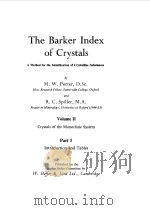
- THE BARKER INDEX OF CRYSTALS
- 1956 W.HEFFER & SONS LTD.
-

- THE FUNDAMENTALS OF X-RAY AND RADIUM PHYSICS
- 1957 CHARLES C THOMAS PUBLISHER
-
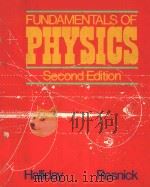
- FUNDAMENTALS OF PHYSICS SECOND EDITION
- 1981 JOHN WILEY & SONS
-

- FUNDAMENTALS OF PHYSICS THIRD EDITION EXTENDED
- 1988 JOHN WILEY & SONS
-
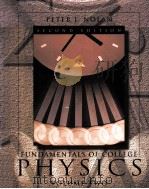
- FUNDAMENTALS OF COLLEGE PHYSICS SECOND EDITION VOLUME TWO
- 1993 WM.C.BROWN PUBLISHERS
-
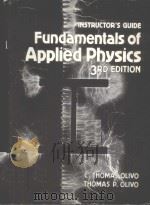
- INSTRUCTOR‘S GUIDE FUNDAMENTALS OF APPLIED PHYSICS 3RD EDITION
- 1984 DELMAR PUBLISHERS INC.
-

- FUNDAMENTALS OF APPLIED PHYSICS 3RD EDITON
- 1984 DELMAR PUBLISHERS INC.
-
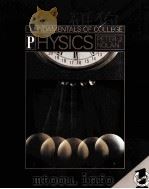
- FUNDAMENTALS OF COLLEGE PHYSICS
- 1993 WM.C.BROWN PUBLISHERS
-
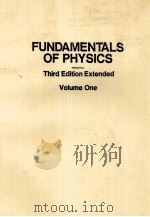
- Fundamentals of Physics Third edition Extended Volume One
- 1988 John wiley&Sons
-
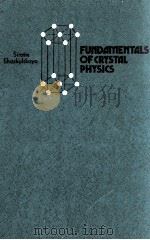
- FUNDAMENTALS OF CRYSTAL PHYSICS
- 1982 MIR PUBLISHERS MOSCOW
-
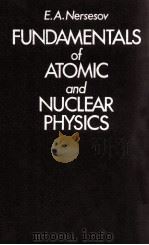
- FUNDAMENTALS OF ATOMICS AND NUCLEAR PHYSICS
- 1988 MIR PUBLISHERS MOSCOW
提示:百度云已更名为百度网盘(百度盘),天翼云盘、微盘下载地址……暂未提供。➥ PDF文字可复制化或转WORD

